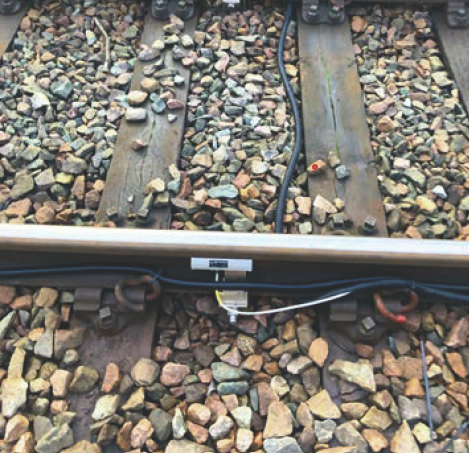Improving Level Crossing Safety
Thursday 9th June 2022 - International Level Crossing Awareness Day
"Build a better mousetrap, and the world will beat a path to your door" is a phrase attributed to Ralph Waldo Emerson in the late nineteenth century.
The phrase, in fact, is a misquote. But it represents a valid truth about the power of innovation and our ability to build on existing ideas simply by introducing something that works even better.
In Europe, level crossing fatalities account for around 1% of all road deaths. This is a figure some might deem 'unimprovable', believing time and finite resources could be focused on other contributing factors. If it isn’t broke, why fix it?
But looked at from another angle - that level crossings account for around 28% of rail fatalities in Europe - we can see the room for improvement.
Target a weak point
There are an estimated one million level crossings around the world in various guises: manned and unmanned; on public land or private property; across busy roads or in depots and container yards. They can range from those featuring automated barriers and traffic signals to merely a few planks of wood between rails in open farmland.
Despite their prevalence, each year around 6,000 fatalities are recorded at railway crossings, along with many thousands of near misses.
In the UK, for example, level crossings make up about 8% of the total mainline rail risk figure, which in 2020/21 meant five fatalities and around 400 near misses of road vehicles, cyclists and pedestrians.
Of those five fatalities, three occurred at locations where the tracks cross pedestrian footpaths. These crossings are generally of the 'passive' type. Often found in remote locations with irregular traffic patterns, they are usually reliant on the driver of the approaching train sounding the horn or the awareness of the pedestrian to look up and down the line and use their own judgement.
And they are more common than you might think, of the UK's 5,600 crossings, one third lie across pedestrian footpaths.
So, when looking to make improvements, this would be a good place to start.
Optimise an approach
Andy Millar and Beth Bateman of Ricardo's Infrastructure Approvals team have been working with Wavetrain Systems, a Norwegian technology company, on a new system targeted squarely at these passive crossings.
The Level Crossing Warning System (LCWS) is a novel SIL2 train detection system that uses acoustic sensors mounted on the rails to detect approaching trains. Sensitive enough to detect the noise and vibrations of an inbound train several kilometres away, it can warn anyone approaching the crossing via lights or audible sounders. In effect, it is a high-tech version of the old cowboy movie trick of putting your ear to the tracks to detect vibration.
Image: Wavetrain system undergoing UK trials
The system is unaffected by other sounds – such as airplanes or road traffic - as all external noises can be distinguished from sounds from the track itself. And because all the components are installed on site the units are quick to install, easy to maintain, do not require trackside cabling to be run out and, therefore, are optimised for remote locations.
Overcome the challenges
Andy and Beth have helped to develop the system hazard and risk analysis, and the resultant Safety Case and Design for Reliability case, to demonstrate that Wavetrain's system achieves the required safety and reliability performance for Network Rail mainline application on footpath crossings, and hence achieve type approval for the product.
Even so, all new approaches will experience challenges: in this case, a failure occurred during the very final stages of the on-track test period, causing an additional year of work whilst Wavetrain Systems analysed massive amounts of recorded data to understand the issue.
As a solution was developed, the Ricardo team worked with Wavetrain's technicians to ensure there was a clear safety argument, that the solution addressed the identified safety risk, and did not in itself introduce any new risks, a challenging argument to produce with a failure that was almost impossible to replicate.
The Safety Case was updated, and another monitored test period was successfully completed, allowing Network Rail to issue a Product Approval certificate.
Wavetrain Systems are now seeking opportunities to deploy their system at footpath crossings in the UK, initially, and at a later stage to locations around the world.
Acknowledge achievements
This Thursday (June 9th) is International Level Crossing Awareness Day, a worldwide drive to raise awareness and reduce incidents.
But it is also a time to recognise efforts to reduce risks in the rail environment. Innovations with the potential to prevent unnecessary fatalities are always worthy of our time and resource.
As an industry, we should be constantly striving to build better mousetraps.









